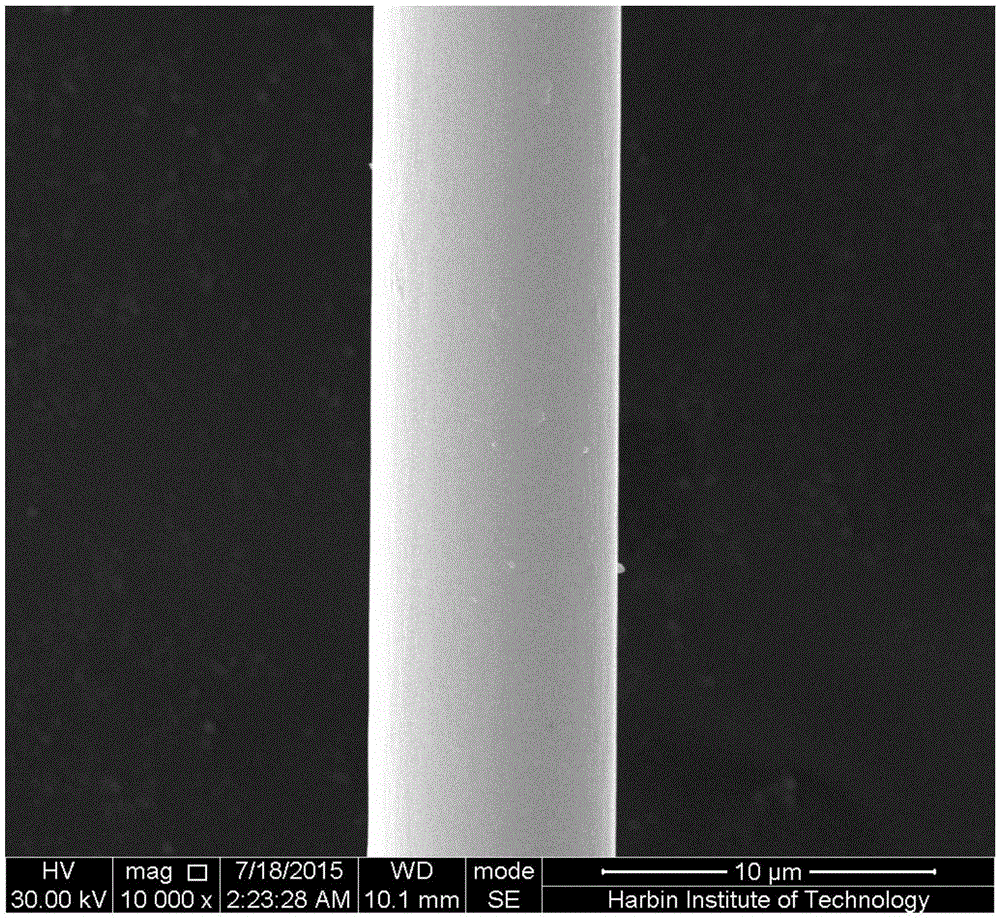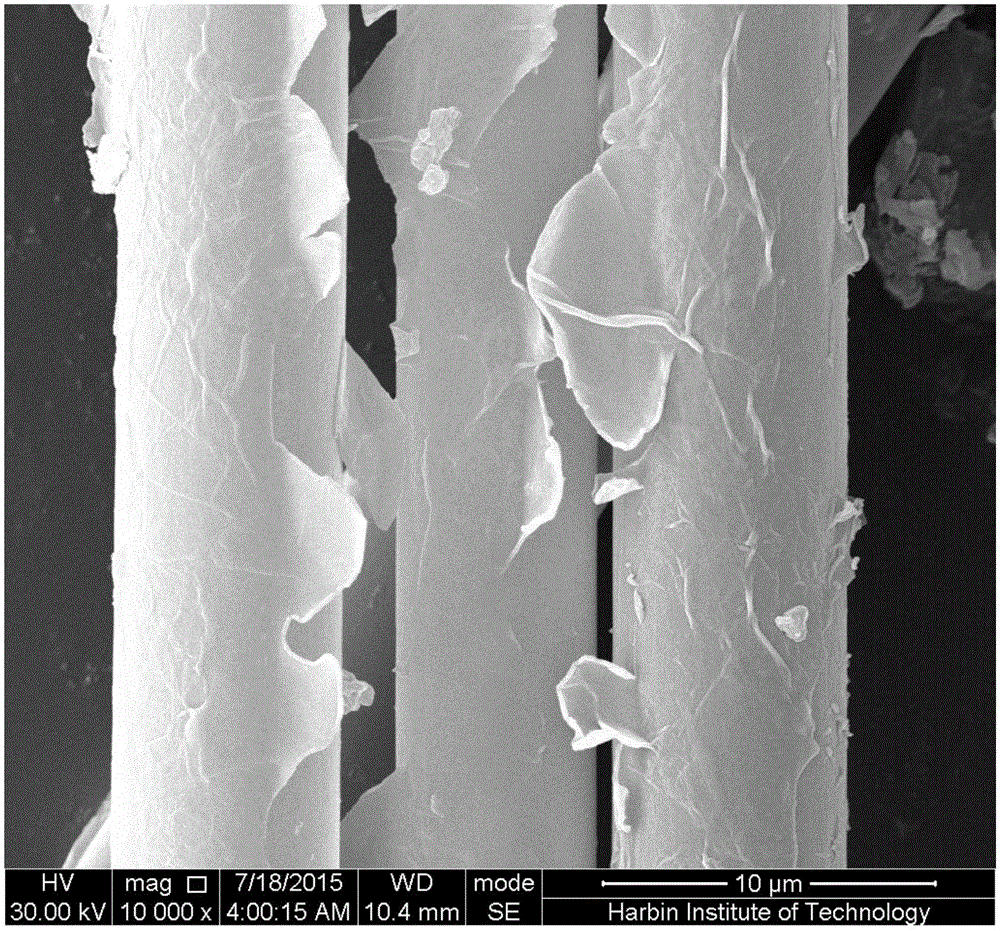Method for surface modification of carbon fiber through graphene oxide
A graphene surface, carbon fiber technology, applied in the direction of carbon fiber, fiber processing, textiles and papermaking, etc., can solve the problems of carbon fiber surface inertness, low surface energy, poor thermal properties, etc., to improve mechanical properties and thermal stability, improve Interface properties, the effect of improving toughness
- Summary
- Abstract
- Description
- Claims
- Application Information
AI Technical Summary
Problems solved by technology
Method used
Image
Examples
specific Embodiment approach 1
[0028] Specific embodiment one: the method for a kind of graphene oxide surface modification carbon fiber of the present embodiment is to carry out according to the following steps:
[0029] 1. Prepare graphene oxide by modified Hummer's method:
[0030] a. Under the condition of ice-water bath, graphite powder and concentrated H with a mass concentration of 98% were successively 2 SO 4 、NaNO 3 and KMnO 4 Add it into a round-bottom flask and stir, heat up to 35°C, react for 7 hours, cool down, put it in an ice-water bath, and then add concentrated H with a mass concentration of 98% to the round-bottom flask 2 SO 4 and KMnO 4 , heated up to 35°C, and reacted for 12h; wherein, the graphite powder and the first added mass concentration of 98% concentrated H 2 SO 4 The mass ratio is 1:40~50; the graphite powder and NaNO 3 The mass ratio of is 2:1; Described graphite powder and the KMnO that add for the first time 4 The quality is 1:3; Described graphite powder and the mas...
specific Embodiment approach 2
[0045] Embodiment 2: This embodiment is different from Embodiment 1 in that: the mass of carbon fiber and the volume of acetone described in step 2 are 1g:6mL. Others are the same as in the first embodiment.
specific Embodiment approach 3
[0046] Embodiment 3: The difference between this embodiment and Embodiment 1 or 2 is that the volume ratio of the carbon fiber described in step 2 to the concentrated nitric acid with a mass fraction of 69% is 1g:6mL. Others are the same as in the first or second embodiment.
PUM
| Property | Measurement | Unit |
|---|---|---|
| quality score | aaaaa | aaaaa |
Abstract
Description
Claims
Application Information
 Login to View More
Login to View More - R&D
- Intellectual Property
- Life Sciences
- Materials
- Tech Scout
- Unparalleled Data Quality
- Higher Quality Content
- 60% Fewer Hallucinations
Browse by: Latest US Patents, China's latest patents, Technical Efficacy Thesaurus, Application Domain, Technology Topic, Popular Technical Reports.
© 2025 PatSnap. All rights reserved.Legal|Privacy policy|Modern Slavery Act Transparency Statement|Sitemap|About US| Contact US: help@patsnap.com



